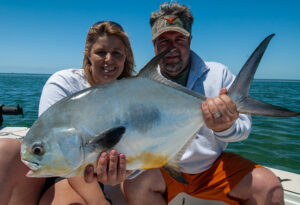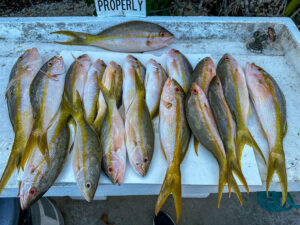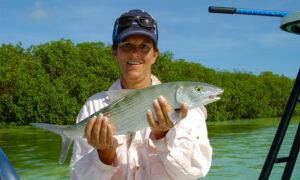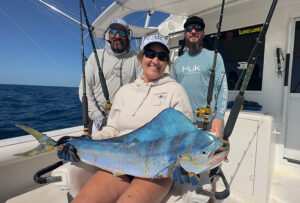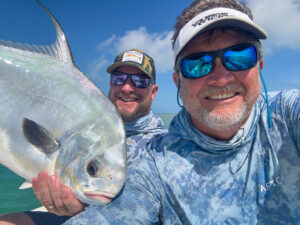What is a bay boat? Thats a great question. Who is qualified to honestly answer it? I think I am. In my career I have owned almost 20 bay boats in one brand or another since 2003, about when the phrase “bay boat” was coined. I have also owned over a dozen flats fishing boats and a bunch of center consoles. Safe to say I have learned allot and defined for myself the things that can make a boat, a bay boat made for fishing.
Before we get too far into this I would like to point out that there are many boats that will qualify in the industry as a “made for the bay” boat. Pontoons come to mind then deck boats, small center consoles and frankly any smaller boat that makes the bay waters their home 95% of the time for things like fishing, sandbar trips and boating in general.
For the focus of this article I will cover bay boats made for fishing on the more technical side and the things that make them good at it.
What Are Bay Boats Used For
For this article bay boats are used for fishing the shallows and inland waters of the bay in any given coastal area. Estuaries, flats, channels, passes, cuts and bays. Here in Key West we call it Backcountry Fishing. Reminder that we are focused on mission specific bay boats for fishing with a side bar of other activities.
Check Out This Video
“Day One With My New Bay Boat”
Bay Boats By Dimension and Configuration
A bay boat truly should not be over 24 ft in length and nor under 21 ft for many reasons I will get into later. Beam should be 8 ish feet and be a single engine. This can include cats which may be a bit beamier which for fishing is a benefit for stability.
The weight will vary from length, build materials and features. I have seen 24s weigh as little as 2800 lbs including motor that are made out of carbon fiber. Typical build I would expect a basic “flat deck” 24 to weigh in around 4000 lbs. including motor.
Freeboard or gunnel height should be limited. Shorter than most boats a bay boat should be closer to the water for less windage and height when casting. a height of 18″ – 32″ from water to the top of casting deck is perfect.
A bay boat for fishing should be configured as a center console that is easy to walk around. Followed by a leaning post or driving seats (very popular these days). Bay boats should have a nice large casting deck almost the height of the gunnels for fishing activities on the bow and in many cases another casting deck on the stern in the back of the boat as well. Add that to wide gunnels especially on the shorter boats for walking on safely fore to aft. In my opinion at least 45% of the boats topside should be casting decks. All round fish-ability is key on a bay boat.
Fuel capacity should not be greater than 75 gallons and no less than 50. A single engine, well designed bay boat will get 3.5 – 4 mpg at cruise. Thats about 245 miles of range with 5 gallons (17.5 miles) reserve.
A bait well is required in a bay fishing boat. Often they will have 2 or in extreme cases 3 bait wells depending on configuration and options. Bait wells range in size from 25 – 75 gallons and are considered recirculating by design from pumps that flush fresh raw water to them and a drain that allows export of flow. Some designs, like mine in my Yellowfin 24 CE “Critter” series has an additional smaller critter tank that is kept with a bubbler to keep critters like crabs and shrimp alive.
Bay Boat Equipment And Rigging
As mentioned earlier a true bay boat has only one engine. This can range in size from 150 to 400 Hp outboards depending on the boats needs. 20 – 25 inch shaft length motors that are rigged on electric hydraulic jack plates that raise and lower the outboard motor for many advantages, mostly in the shallows.

Keep in mind that there are other boats that look like bay boats but have two outboards over 24 ft that live in a category called “Hybrid”. This is a cross between bay boat and offshore center console. These very popular boats are too big, bulky and draw too much water (sit too deep) to be considered a real or “technical” bay boat capable of the description above. However worth a look if a buyer wishes to have capabilities in both worlds and appeal to family needs, wants or desires. In my opinion the hybrid is not really good at either, but might be ok at more things. More like the Swiss Army knife of boats in this size range. They sure look sharp, run like the wind make a great starter kit for multi engine center consoles…
Look for my article coming up about the hybrids at the end of the summer when I get my hands on a 26 ft Yellowfin twin engine Hybrid.
On The Deck

On the deck expect everything to be flush mounted or at least low profile. Things like hinges, hatch lifts and drainage. Rod holders should be lined with rubber for sensitivity to cork rod buts and handles that are commonly used for inshore fishing. Deck hardware should all be stainless steel or titanium like mine is with products from GemLux.
Towers And Stuff
Some bay boats have upper control stations or “half towers”. These features are great for viewing fish in the shallows or guiding fishing charters directing folks where to cast. Some of these upper stations will be rigged to run the boat at speed with a complete control station. A couple of dissadvantages of the “tower boats’ are the ability to get under short bridges. The extra weight and rigging expense. Some tower add ons can add as much as 15,000.00 to a bay boat build and in extreme cases up to 400 lbs. Lastly, if the user structure is built wrong it will fail. Fail in the form of cracks in the welds or broken tubes. Do your research on the internet to find out if there is a history of these problems from your builder.
Lets Get Anchored
Power Pole shallow water anchors in my opinion are required to meet the bay boat definition. I think they should come in pairs but a single power pole is base line rigging for any bay boat used for fishing. Besides ease of use to anchor in the shallows. Power Poles are particularly environmentally sensitive. Power poles do way less damage to the bottom than anchoring. There are other brands that try and do the same thing but none compare to JL marine and the Power Pole not only in customer service but also in reliability…
Trolling Motors

To be effective as a technical bay boat for fishing a trolling motor is required. Almost always located on the bow of the bay boat the trolling motor is a critical piece of the puzzle when putting a bay boat together. These are fantastic tools to keep you on the fish or allow you into areas called “pole or troll” that are becoming more and more popular in our bays and estuaries. In addition a great way to explore inland creeks and hard to get to places. Trolling motors are mostly 36 volt in power requiring a battery location for up to three 12 volts are a 36 volt either lithium ion or AGM deep cycle batteries. They are mostly all remote controlled and range in price from $2500 – $6000.00. Nearly all the trolling motors these days have a feature that keeps the boat in the same spot by the click of a button. While trolling motors have come a long way this is definitely a piece of equipment that comes with a get what you pay for tag. In salt water if you pay less, somehow you will suffer.
Gadgets and Electronics

Electronics are a personal choice. I use GARMIN Marine electronics. They have units that can fit any budget offering unmatched ease of use. For a bay boat the Base line is this. Get a decent unit that offers Side view and traditional chirp sonar capability with a viewable and updated chart plotter with decent cartography. Price wise things can go crazy with electronics but if you stick with the base line a person can stay within budget and get a great set of tools to work with. There are many brands out there, of course my favorite is GARMIN. Simrad, Lowrance are also good options as well for salt water applications.
Tunes And Sounds
And of course seems like all the newer fishing boats out there these days. Most bay boats have a nicer stereo than anything I ever had in any car. Is it required to make a bay boat a bay boat.. No, so far a stereo has never helped me catch fish or go faster, or ride better. In fact, all in they are quite heavy and can slow a boat down a bit. That said, when building or outfitting a bay boat get the best or the rest will fail, rust, fade, or look bad in a short period of time time. I have had great luck with JL.
– See more in Outfitting a bay boat article.
Capabilities
I feel that a real bay boat should be able to fish the bay, channels, estuaries, flats, cuts and pole and trolls very well. in addition to that the bay boat should ride better than a flats skiff but probably not as good as a hybrid.
Because of the technology found in bay boats these days I have all but replaced my flats fishing skiff with my Yellowfin 24 CE bay. I can offer my anglers all the same fish including bonefish on the flats and reef fish when it’s nice. In fact I have a fishing charter that I call the All In Wonder that does just that. When I started running bay boats for charter this trip was a no brainer and has become very popular.
Often when I am consulting with potential boat buyers I get a common question. “Can it do all this AND take if offshore”? The thought of taking a bay boat offshore should be left to the blue bird perfect day with careful planning and paying attention to any changes in weather. Yes, we all know the guy who has taken a bay boat 50 miles out or across the Gulf Stream to Bimini or beyond. I am one of those guys. However I prefer to use my 36 Yellowfin for trips like that. Bottom line is, don’t buy a bay boat with the expectation to frequently use it offshore.
How Low Can You Go
Draft or the depth of water a bay boat can float in with three grown people on board is one of the Key features of a real bay boat. I frequently take my anglers fishing for bonefish on the shallow flats here in Key West. My yellowfin 24 CE draws about 11 inches with me and my two anglers all the way forward with half a tank of bait well and 20 gallons of fuel. My boat will float shallower than my Power Pole MOVE trolling motor can pull it. That said, I think a REAL 15 inches or less is great for a technical bay boat. The larger “Hybrids” with twin engines squat way too much to be functional in the shallows and remain bulky and not as easy to manage in the shallows with a trolling motor. I will learn more for my comparison when I get my hands on a 26 Hybrid later this summer.
Check Out The Video
Shallow Water With My Bay Boat
Does Size Matter?
Why 24 ft or less? simply for maneuverability. Some of the creeks I get into get tight and my boat is almost too long to turn around without jamming up in the trees. Of course a 21 ft boat is better for this but may suffer some draft due to less displacement. It’s all a choice of what a person is willing to compromise. A benefit to my 24 ft is the ability to reach over the chop on sloppy days and believe it or not – float shallower. Shorter boats will suffer here. Longer boat, more persons will have less affect due to added displacement.
Trailering Is Easy
Trailer ability is another key feature to a bay boat. On the trailer they are the perfect length. Easy to maneuver and light enough for any light duty tow vehicle. Easy in and out of the water, short times at the ramp and most will fit in a decent size garage. EZ PZ

In Closing
Whether your boating is recreational or commercial like mine, choices are made. Choices based on our favorite brands and trade offs in what we want versus how we use the boat. What is important is the feeling you have after investing a good chunk of change in a choices. Education helps in all that and I hope some of what I have written about above may help a person chose wisely for what they need in a bay boat.
I am always happy to hear from anyone looking to buy or build a boat. I have worked with loads of folks to build the boat suited to them regardless of brand. Feel free to reach out to me on email or text. (I rarely answer my phone). I am happy to give my unbiased opinion about what is available in the industry today.
My Email
captsteven@fishingkeywest.com
My Text
305-304-0497


